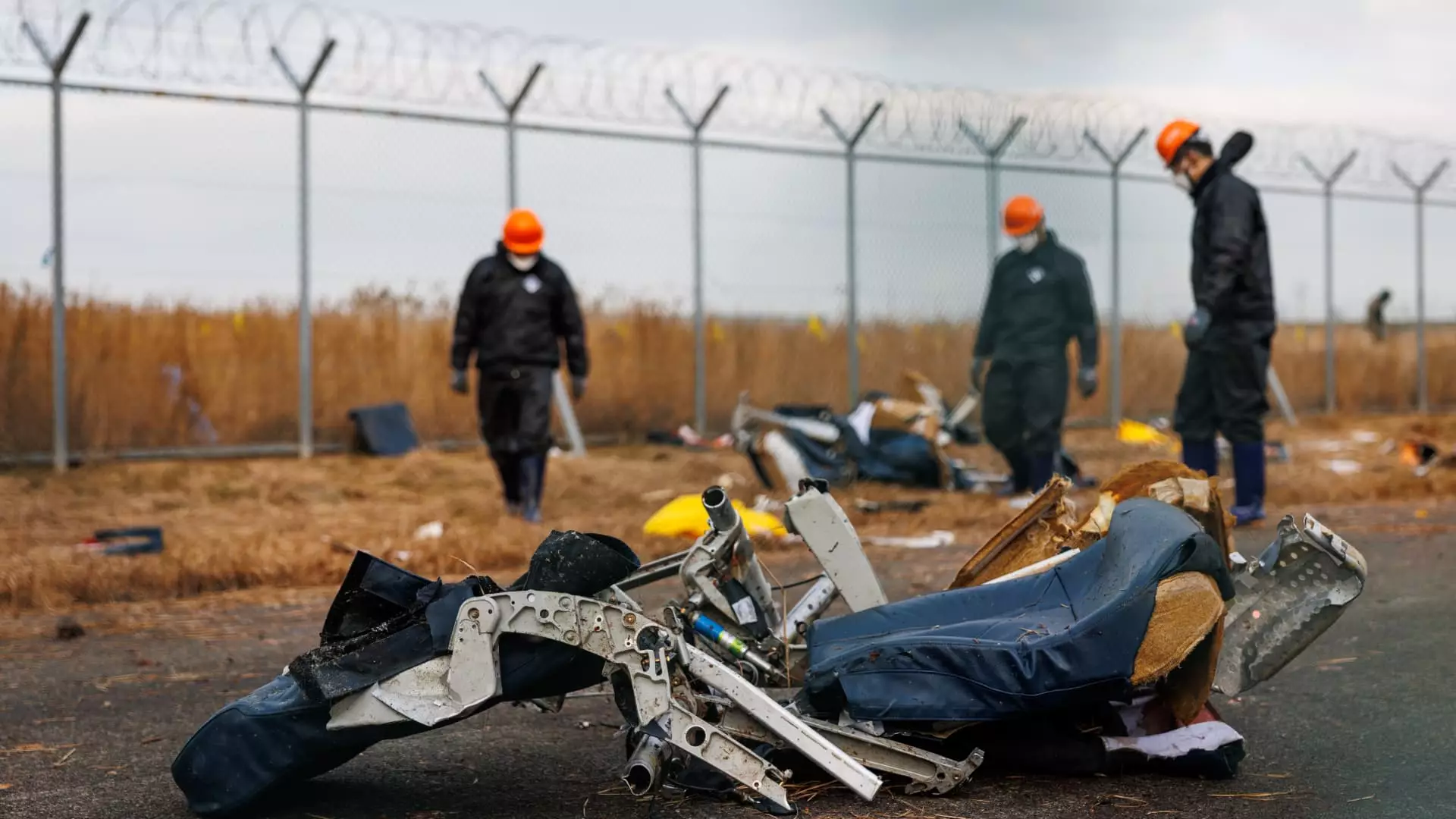The recent tragedy involving Jeju Air has not only shaken the South Korean aviation scene but also raised pressing concerns about aircraft safety regulations worldwide. Over the weekend, a Jeju Air Boeing 737-800 faced a catastrophic incident shortly after landing at Muan International Airport, resulting in 179 fatalities out of 181 passengers. The accident, characterized by a landing with malfunctioning gear, led to the aircraft skidding off the runway and colliding violently with a concrete wall before igniting into flames. The survivors, two crew members, managed to escape from the wreckage, which begs the question of how such a disaster could occur in an era of advanced aviation technology and safety protocols.
The initial investigation by South Korea’s Ministry of Land, Infrastructure, and Transport (MOLIT) indicates a potential bird strike was reported by the pilot, just minutes after the control tower issued a bird activity alert. This revelation adds another layer of complexity to the circumstances leading to the crash, as bird strikes are a recognized hazard in aviation but prompt questions surrounding the adequacy of preventive measures that aircraft operators should be employing.
In the wake of the disaster, Boeing’s shares dropped by nearly 5% in premarket trading, signaling investor anxiety over the implications for the manufacturer amid increased scrutiny of its aircraft models. The Boeing 737-800 has been a staple in the aviation industry for nearly three decades and is widely utilized by several low-cost carriers in South Korea, including Jeju Air, which operates a fleet of 39 such aircraft. As MOLIT initiates emergency inspections across all B737-800 models, investor confidence in Boeing continues to be questioned.
Boeing’s long history has not been without controversies, particularly following the notorious Boeing 737 MAX saga which marked significant challenges for the manufacturer. The sensitivity surrounding their aircraft models has been reignited, and with it, renewed scrutiny into Boeing’s design, manufacturing practices, and compliance with safety regulations. Notably, this incident places Boeing at a critical juncture; it not only would need to address the immediate safety concerns brought forth by this incident but also reassess its reputation in the aviation market, which has already been bruised from past flaws.
MOLIT’s reaction, which included ordering an urgent safety inspection of the B737-800 aircraft fleet, underscores the vital role regulatory bodies have in ensuring aviation safety. Officials emphasized compliance with safety standards and operational procedures, as well as the importance of routine maintenance checks for preventing such tragic events. Ju Jong-wan, director of the Aviation Policy Office at MOLIT, hinted at potentially fortifying regulations concerning bird strikes, which could have massive implications for how airports, especially those in proximity to wildlife, operate.
Additionally, the U.S. National Transportation Safety Board (NTSB) has been deployed to assist in the investigation, representing a collaborative effort in addressing aviation safety concerns across borders. The involvement of international aviation safety experts also signals a collective understanding that such accidents often have global ramifications, transcending national boundaries.
The ramifications of this incident extend well beyond Boeing and Jeju Air. The airline industry is under constant pressure to maintain safety standards while juggling financial viability, especially for low-cost carriers. Following the crash, shares of Jeju Air hit an all-time low, reflecting market sentiment about the impact of this fatal incident on their operational integrity and trustworthiness.
Moreover, the ongoing discourse on the nature of aviation mishaps must evolve. Stakeholders, including airlines, aircraft manufacturers, and regulatory bodies, must engage in continuous dialogue to understand risks better and mitigate unforeseen circumstances. This could entail revising and enhancing existing safety protocols, focusing on thorough training for flight crews, and developing better communication channels between aircraft and ground control in times of distress.
The Jeju Air crash serves as a sobering reminder of the fragility of life in the aviation industry. While investigations continue and the industry begins to grapple with the implications of this tragedy, an urgent call for comprehensive aviation safety reforms and a rectification of existing protocols must take precedence to prevent future occurrences.


Leave a Reply